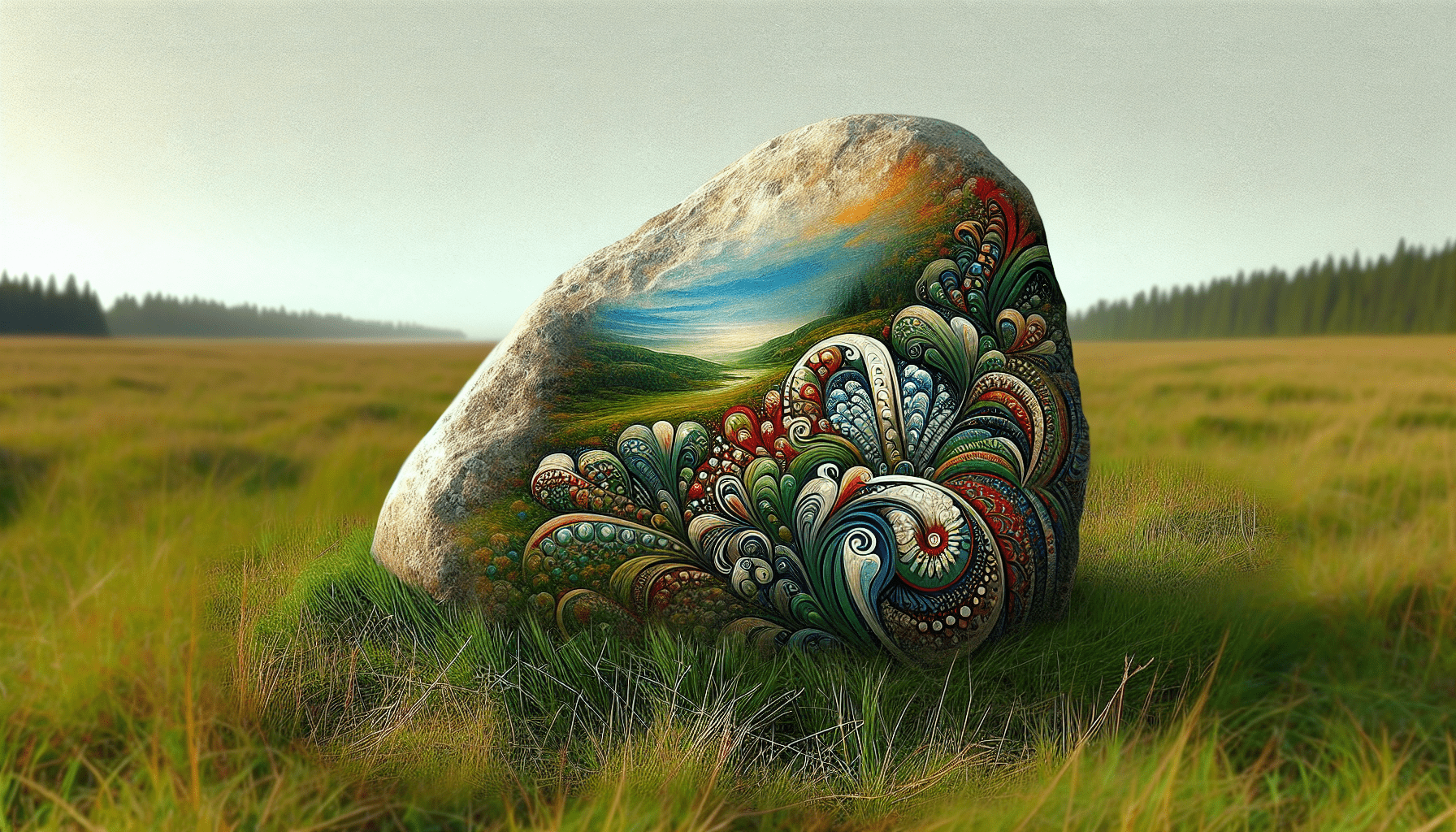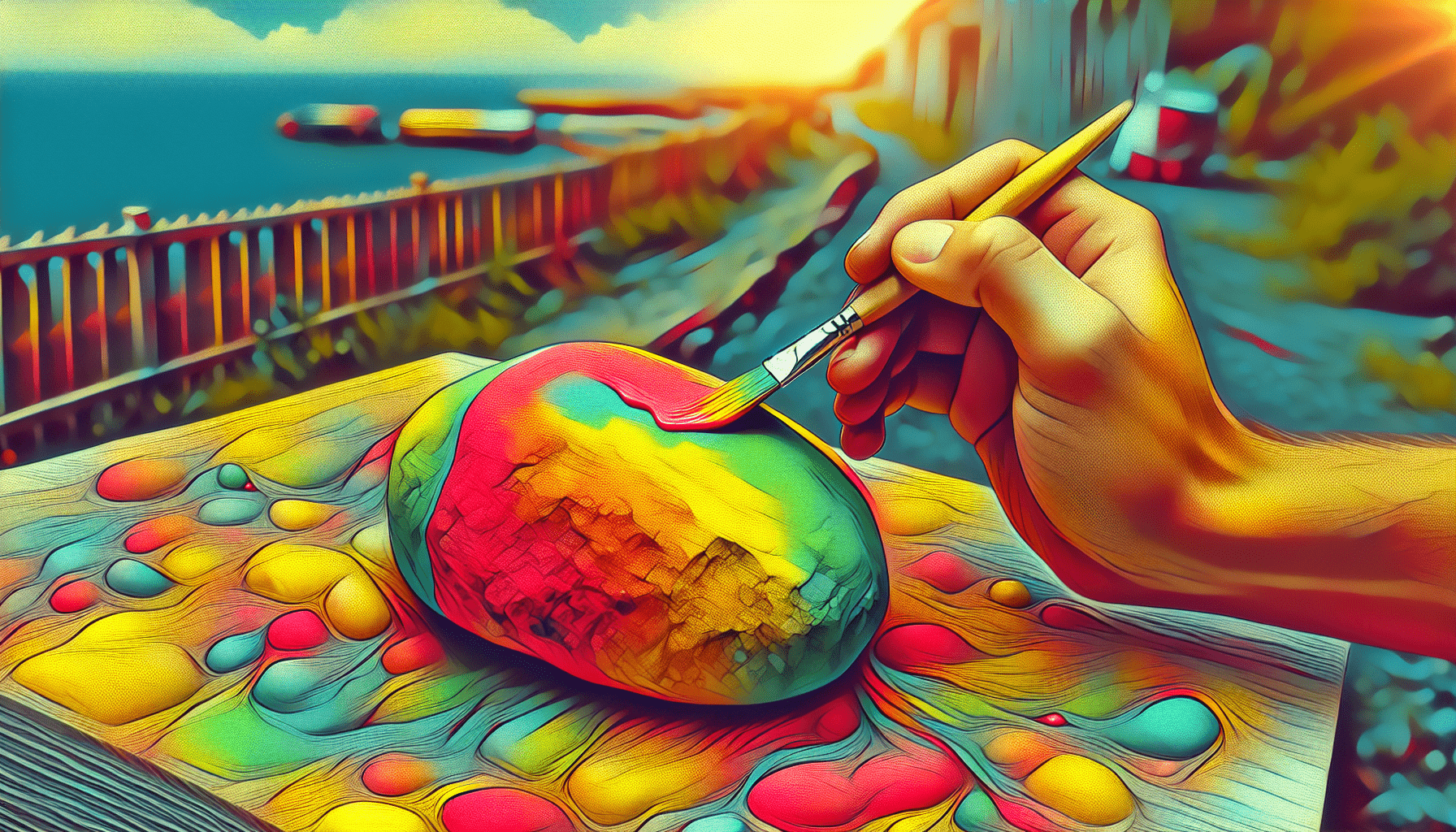Have you ever wondered about the artistic expression found in rock painting? This ancient form of art has been practiced by numerous cultures worldwide, featuring a variety of styles and techniques. Understanding rock painting not only offers insight into ancient civilizations but also into the human instinct for creativity and communication.

The Definition of Rock Painting
Rock painting, known interchangeably as rock art, consists of paintings applied to natural rock surfaces. These works are significant historical and cultural artifacts, often found in caves, cliffs, and other rock formations. This practice dates back thousands of years and retains its relevance due to its profound historical insights and aesthetic presence.
The Origins of Rock Painting
Rock painting is one of the earliest forms of artistic expression. The oldest known rock paintings, found in Indonesia and dating back approximately 44,000 years, illustrate prehistoric humans’ capacity for symbolic thought and creativity. Other notable sites include the famous Lascaux Cave paintings in France and the Chauvet Cave paintings, which suggest that early humans relied on rock painting to communicate and document their experiences.
Geographic Distribution of Rock Paintings
Rock paintings can be found on every continent except Antarctica. These artworks often appear in widespread regions such as:
| Region | Notable Sites |
|---|---|
| Europe | Lascaux (France), Altamira (Spain) |
| Africa | Tassili n’Ajjer (Algeria), Drakensberg (South Africa) |
| Asia | Bhimbetka (India), Sulawesi (Indonesia) |
| Australia | Kakadu National Park, Ubirr, and Mount Borradaile |
| Americas | Serra da Capivara (Brazil), Chaco Canyon (USA) |
Themes in Rock Painting
The themes depicted in rock paintings vary widely, offering insights into the beliefs, practices, and daily lives of ancient peoples. Common themes include:
- Animals: Frequently depicted, these may represent prey or totemic animals, as seen in many European and African sites.
- Human Figures: Often engaged in various activities such as hunting, dancing, or rituals.
- Abstract Symbols: Unique markings or geometric shapes whose meanings remain speculative.
Techniques Used in Rock Painting
Rock painting involves a variety of techniques, each demonstrating the skill and artistic knowledge of the artisans.
Pigments and Materials
Prehistoric artists used natural pigments like charcoal, ochre, and hematite to create their artworks. These materials were often mixed with binders such as animal fat or plant sap to adhere to rock surfaces effectively.
| Pigment | Source |
|---|---|
| Charcoal | Burned wood or bones |
| Red Ochre | Hematite |
| White Pigment | Kaolin or clay |
| Yellow Ochre | Limonite |
Application Techniques
Different cultures employed various methods to apply pigment to rock surfaces:
- Direct Application: Using fingers, brushes made from animal hair, or sticks.
- Spray Painting: Blowing pigment through hollow bones or mouth directly onto the surface.
- Stenciling: Placing an object, such as a hand, on the rock and spraying pigment around it.
Preservation
Despite the natural protection offered by caves and cliffs, rock paintings face threats from weathering, human activity, and environmental changes. Preservation efforts include creating replicas, limiting access to sites, and employing advanced conservation techniques.
Cultural Significance of Rock Painting
Rock paintings serve more than just an artistic role; they are windows into the past, providing valuable cultural and historical context.
Documentation of Daily Life
Rock paintings often illustrate the day-to-day activities of ancient peoples. Hunting scenes, fishing, and communal gatherings reveal their survival strategies and social structures.
Spiritual and Religious Expressions
Many rock paintings reflect spiritual beliefs and religious practices. For example, various indigenous Australian rock art features Dreamtime stories that are integral to their creation myths and cultural identity.
Social and Political Structures
The presence and complexity of certain rock paintings can indicate social hierarchies and community organization. For instance, elaborate ceremonial illustrations might suggest a society with structured religious and social roles.
Famous Rock Painting Sites
Numerous rock painting sites have gained international recognition for their historical significance and artistry.
Lascaux Cave (France)
Discovered in 1940, the Lascaux Cave in southwestern France is home to some of the most famous Paleolithic rock paintings. The imagery primarily depicts large animals and is noted for its sophisticated use of color and shading.
Altamira Cave (Spain)
Known as the “Sistine Chapel of Prehistoric Art,” the Altamira Cave features vivid depictions of bison, horses, and other animals. Discovered in the late 19th century, Altamira’s paintings significantly influenced the study of prehistoric art.
Kakadu National Park (Australia)
Kakadu National Park is a UNESCO World Heritage site well-known for its extensive collection of Aboriginal rock paintings. These artworks span a diverse range of themes, from the daily life of ancient Australians to intricate representations of Dreamtime stories.

Modern Rock Painting Communities
While ancient rock painting often captures imaginations, contemporary communities also engage in rock painting, continuing this time-honored tradition.
Indigenous Practices
Many indigenous cultures around the world maintain the tradition of rock painting. For example, Australian Aboriginal communities continue to create rock art, ensuring the preservation and continuation of their cultural narratives.
Artistic Movements
Modern artistic movements occasionally integrate rock painting as a medium. Contemporary artists may explore rock surfaces for mural projects, blending ancient techniques with modern themes and styles.
Educational and Recreational Activities
Rock painting has found a place in educational and recreational spheres. Workshops and community events often offer rock painting activities, encouraging appreciation for this ancient art form and fostering communal creativity.
The Future of Rock Painting
The continuous study and preservation of rock painting ensure that future generations can appreciate this remarkable art form. Advances in technology, such as digital mapping and high-resolution photography, aid in cataloging and analyzing rock paintings, making it easier for researchers to study and preserve these artworks.
Preservation Challenges
Efforts to preserve rock paintings face several challenges, including:
- Environmental Factors: Weathering, rain, and temperature changes can erode painted surfaces.
- Human Interference: Vandalism and unregulated tourism pose significant threats to these sites.
- Development Projects: Urban expansion and infrastructural developments can lead to the destruction of rock painting sites.
Sustainable Tourism
Promoting sustainable tourism is crucial for the preservation of rock painting sites. Responsible tourism practices include limiting visitor numbers, providing educational programs, and enforcing strict conservation policies to protect these invaluable cultural treasures.
Community Involvement
Engagement with local communities is essential for effective conservation efforts. Empowering indigenous and local populations to take active roles in preserving rock painting sites ensures that these traditions and the knowledge associated with them are maintained and respected.
Conclusion
Rock painting stands as a powerful testimony to the enduring human spirit of creativity and communication. Its rich history, diverse techniques, and profound cultural significance offer deep insights into our ancestors’ lives and beliefs. By continuing to study, preserve, and celebrate rock painting, you play a part in safeguarding this precious heritage for future generations.



